
Southeast Alaska, often abbreviated to southeast or southeastern, and sometimes called the Alaska(n) panhandle, is the southeastern portion of the U.S. state of Alaska, bordered to the east and north by the northern half of the Canadian province of British Columbia. The majority of southeast Alaska is situated in Tlingit Aaní, much of which is part of the Tongass National Forest, the United States' largest national forest. In many places, the international border runs along the crest of the Boundary Ranges of the Coast Mountains. The region is noted for its scenery and mild, rainy climate.

Juneau, officially the City and Borough of Juneau, is the capital of the U.S. state of Alaska, located along the Gastineau Channel and the Alaskan panhandle. Juneau was named the capital of Alaska in 1906, when the government of what was then the District of Alaska was moved from Sitka as dictated by the U.S. Congress in 1900. On July 1, 1970, the City of Juneau merged with the City of Douglas and the surrounding Greater Juneau Borough to form the current consolidated city-borough, which ranks as the second-largest municipality in the United States by area and is larger than either Rhode Island or Delaware.

The Municipality and Borough of Skagway is a first-class borough in Alaska on the Alaska Panhandle. As of the 2020 census, the population was 1,240, up from 968 in 2010. The population doubles in the summer tourist season in order to deal with the large number of summer tourists each year. Incorporated as a borough on June 25, 2007, it was previously a city in the Skagway-Yakutat-Angoon Census Area. The most populated community is the census-designated place of Skagway.

The Klondike Gold Rush was a migration by an estimated 100,000 prospectors to the Klondike region of Yukon in northwestern Canada, between 1896 and 1899. Gold was discovered there by local miners on August 16, 1896; when news reached Seattle and San Francisco the following year, it triggered a stampede of prospectors. Some became wealthy, but the majority went in vain. It has been immortalized in films, literature, and photographs.
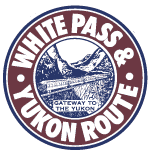
The White Pass and Yukon Route is a Canadian and U.S. Class III 3 ft narrow-gauge railroad linking the port of Skagway, Alaska, with Whitehorse, the capital of Yukon. An isolated system, it has no direct connection to any other railroad. Equipment, freight and passengers are ferried by ship through the Port of Skagway, and via road through a few of the stops along its route.

The District of Alaska was the federal government’s designation for Alaska from May 17, 1884, to August 24, 1912, when it became the Territory of Alaska. Previously (1867–1884) it had been known as the Department of Alaska, a military designation.

Bennett Lake is a lake in the Province of British Columbia and Yukon Territory in northwestern Canada, at an elevation of 656 m (2,152 ft). It is just north of the border with the United States state of Alaska, near the Alaskan port of Skagway. The lake has an estimated area of about 90.68 or 96.8 km2. The average depth is 61.9 m (203 ft) and the maximum depth is 123 m (404 ft).
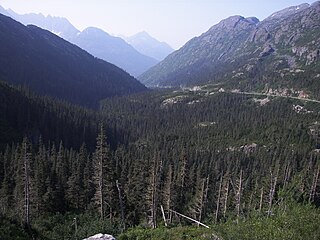
White Pass, also known as the Dead Horse Trail, is a mountain pass through the Boundary Ranges of the Coast Mountains on the border of the U.S. state of Alaska and the province of British Columbia, Canada. It leads from Skagway, Alaska, to the chain of lakes at the headwaters of the Yukon River.

The Alaska Marine Highway (AMH) or the Alaska Marine Highway System (AMHS) is a ferry service operated by the U.S. state of Alaska. It has its headquarters in Ketchikan, Alaska.
Martin Itjen is most famous for being the unofficial premier tour director of Skagway, Alaska in the early 1900s. He held many distinct titles, including that of miner, railroad employee, hotel operator, hack service, the town's undertaker, Ford motor car dealer, and a tour guide. Much of Skagway's early history was saved from destruction because of his interest in the city.
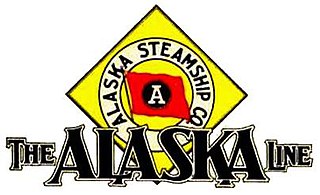
The Alaska Steamship Company was formed on August 3, 1894. While it originally set out to ship passengers and fishing products, the Alaska Steamship Company began shipping mining equipment, dog sleds, and cattle at the outbreak of the Klondike Gold Rush of 1897. The company was purchased by the Alaska Syndicate and merged with the Northwestern Steamship Company in 1909, but retained its name, and the fleet was expanded to 18 ships. During World War II, the government took over the company's ships. When the war ended, the company struggled to compete with the new Alaska Highway for passengers and freight. It discontinued passenger service altogether in 1954 and shut down operations in 1971.
Crystal Brilliant Snow Jenne was the first woman to run for the Alaska Territorial House of Representatives in the Alaska Territory.
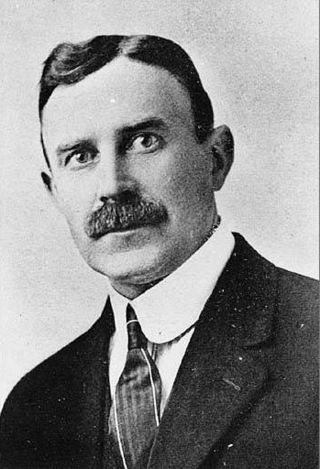
Eric A. Hegg was a Swedish-American photographer who portrayed the people in Skagway, Bennett and Dawson City during the Klondike Gold Rush from 1897 to 1901. Hegg himself participated in prospecting expeditions with his brother and fellow Swedes while documenting the daily life and hardships of the gold diggers.

Frank H. Reid was an American soldier, teacher, city engineer, vigilante, and one of the combatants in the shootout on Juneau Wharf that ended the life of American outlaw Jefferson "Soapy" Smith, as well as Reid's own life.

James Carroll was an Irish American steamboat captain who brought the first large steamboat to Alaska.

Richard Maynard (1832–1907) was a Canadian photographer known mainly for his landscape views taken throughout British Columbia, along coastal Alaska and on the Pribiloff Islands of the Bering Sea.
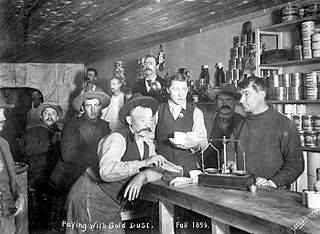
Larss and Duclos was a photographic studio partnership between Per Edvard Larss and Joseph E. N. Duclos (1863-1917) in Dawson City, Yukon Territory during the Klondike Gold Rush era of the late 19th and early 20th centuries.
Webster and Stevens was a photographic studio partnership between Ira Webster and Nelson Stevens. They moved from Michigan to Seattle in 1899 and after working for local photography studios for several years, they opened a studio in 1902 and photographed Seattle and the Puget Sound region. They helped pioneer the area's commercial and photojournalism fields. Their marketing motto was "Anything. Anytime. Anywhere." Their studio produced more than 60,000 black-and-white photographs of Seattle and the Pacific Northwest. They had a contract as photographers for the Seattle Times from 1906 until 1923.
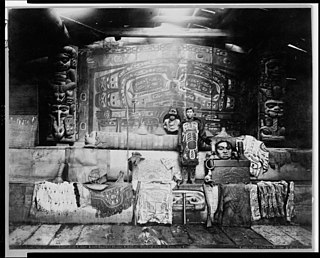
Winter and Pond was a photography studio partnership between Lloyd Valentine Winter (1866–1945) and Edwin Percy Pond (1872–1943) in Alaska. Their work includes scenes of the Klondike Gold Rush, Tlingit, glaciers, vistas, and Juneau. The State of Alaska and Alaska State Libraries have collections of their photographs. The Library of Congress has their panoramic photo of Amalga, Alaska in its collection. Their studio was in business for more than 50 years, and according to the Alaska State Libraries their work provides "a unique reflection of the state in the early 20th century." Pond died in 1943 and Winter passed the business on to Francis Harrison in 1945. Harrison ran Winter & Pond Co. until it closed in 1956.

Stroller White Mountain, also known as Mount Stroller White, is a 5,118-foot (1,560 m) mountain summit located in the Boundary Ranges, in the U.S. state of Alaska. The peak is situated near the toe of the Mendenhall Glacier, within Tongass National Forest, 12 mi (19 km) north-northwest of Juneau, Alaska, and 8 mi (13 km) north of Juneau International Airport. Although modest in elevation, relief is significant since the mountain rises up from sea-level in less than seven miles. Stroller White Mountain is often seen and photographed with McGinnis Mountain, a 4,199-foot (1,280 m) summit 1.6 mi (3 km) south, because they are together in the background behind Mendenhall Lake, a popular tourist and recreation area.




































